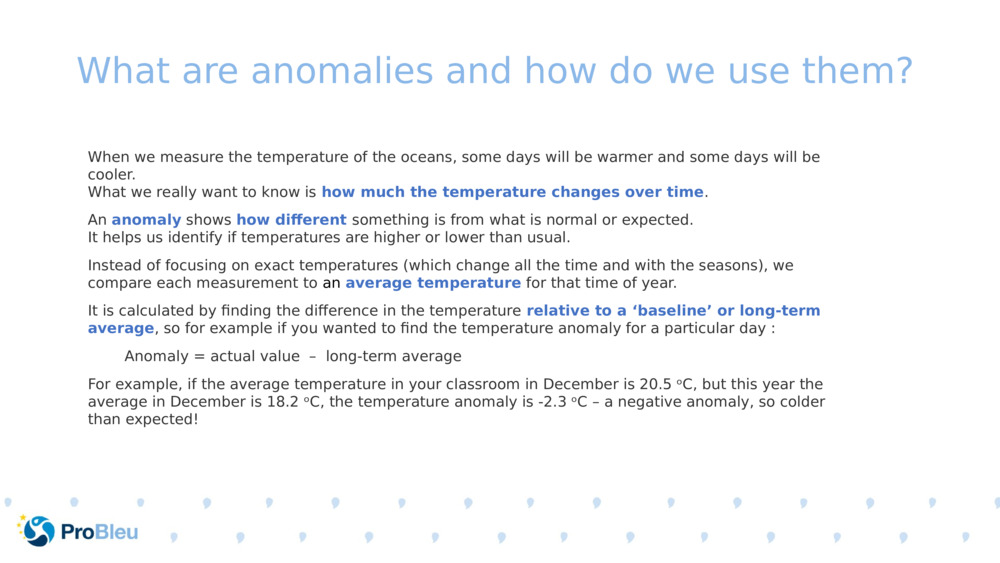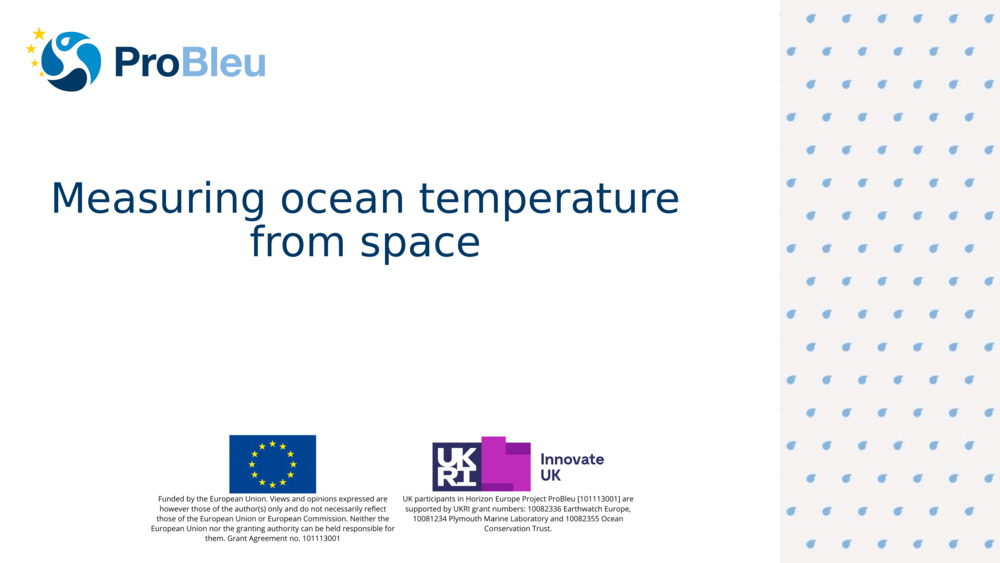What are anomalies and how do we use them?
What are anomalies and how do we use them?
What are anomalies and how do we use them? When we measure the temperature of the oceans, some days will be warmer and some days will be cooler. What we really want to know is how much the temperature changes over time . An anomaly shows how different something is from what is normal or expected. It helps us identify if temperatures are higher or lower than usual. Instead of focusing on exact temperatures (which change all the time and with the seasons), we compare each measurement to an average temperature for that time of year. It is calculated by finding the difference in the temperature relative to a ‘baseline’ or long-term average , so for example if you wanted to find the temperature anomaly for a particular day : Anomaly = actual value – long-term average For example, if the average temperature in your classroom in December is 20.5 ᵒC, but this year the average in December is 18.2 ᵒC, the temperature anomaly is -2.3 ᵒC – a negative anomaly, so colder than expected!

Original Slide Deck: Measuring temperature from space
Topics: Ocean. Climate. Ocean Temperature.
Suitable Ages: 8. 9. 10. 11. 12. 13. 14. 15. 16.
Keywords: Climate. Satellite. Temperature.
Uploaded By: pml-admin
Number of bundles using this content: 2
Licensed under CC BY 4.0
This content has been used in the following resource bundles:
Measuring temperature from space
This resource bundle contains materials that describe how and why sea ...
View BundleMeasuring temperature from space
This resource bundle contains materials that describe how and why sea ...
View Bundle